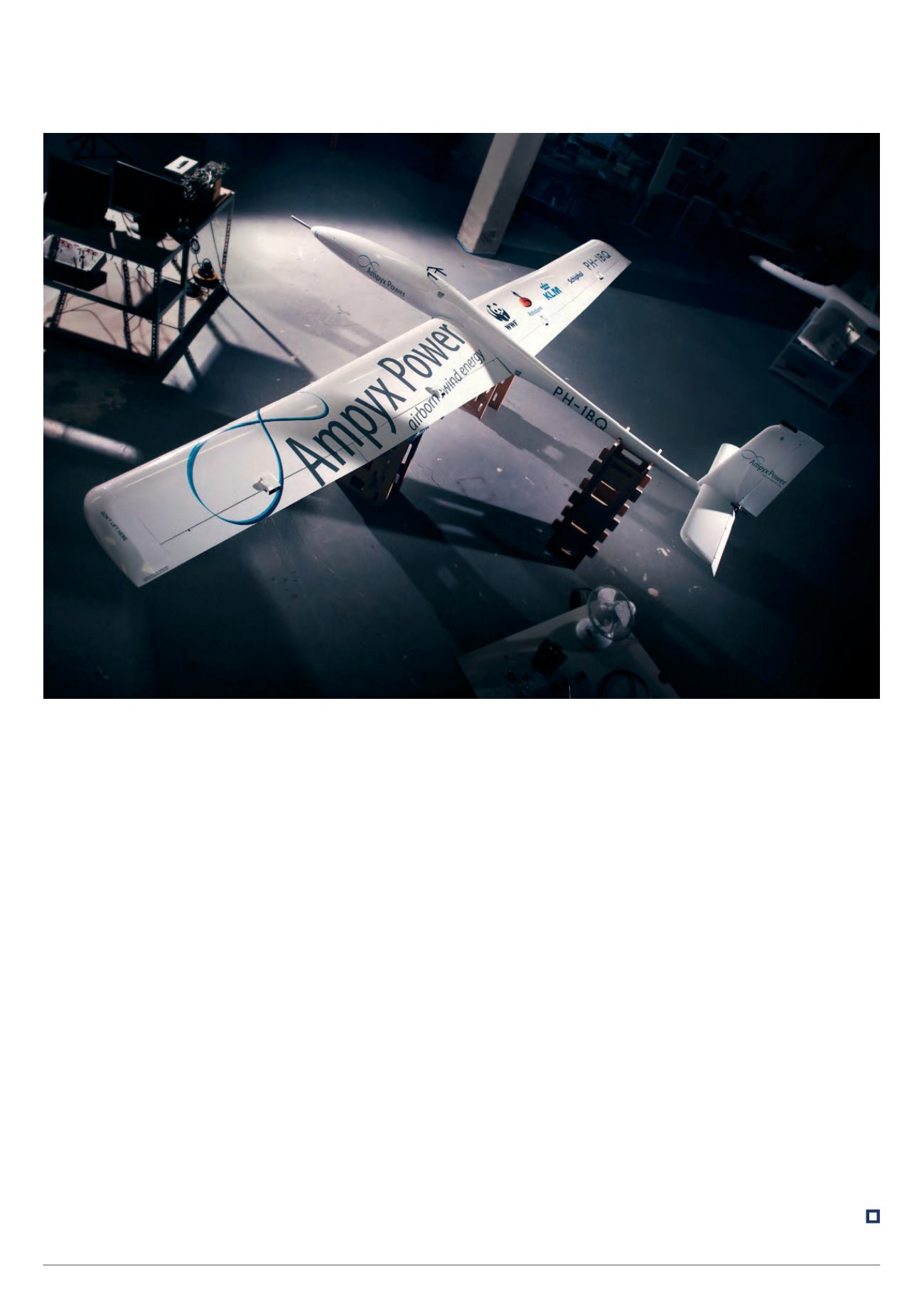

77
“The fact that LynxOS-178 is a
commercial off-the-shelf operating system
that has received acceptance for reusability
from the FAA for DO-178 certification, and
from the EASA, was an important criterion
in our selection process.”
Ampyx Power developed the autopilot
from scratch, and this is one of the main
innovations for the PowerPlane; most other
elements are available off-the-shelf. The
autopilot runs on the latest safety-certified
processors from Freescale Semiconductor
(which is now part of NXP), and together
with LynxOS-178, the control algorithms
and software development process allows
the system to be certified to aerospace
safety standards.
The sensors required were determined
by a top-down safety analysis, and
include an inertial measurement unit,
GNSS unit, air data sensor and a
tensiometer. This ensures that in all flight
phases an accurate input is provided to
the onboard computer and that all off-
nominal situations can be handled.
The UAV is fitted with two small ducted
fans to power the onboard electronics
from the wind energy. Lithium-ion
batteries are not used, but are still on
board to enable a safe landing in case
of failure of one of the fans. With this
architecture, there is no need for fuel
cells, and flight time is limited only by
unfavourable wind conditions.
The operational height is maximised
at 450 m, and includes margins for
safety and counteracting strong gusts
of wind. Nominal operations range
from 150-350 m, which is within the
regulatory flying limits. Ampyx Power
says it has fully mapped all regulatory
needs for permits to operate and
doesn’t consider the maximum height
to be an issue, and that the autopilot
has no problems with managing a safe
landing from any height.
Conclusion
The start of the first commercial UAV-
based delivery service illustrates some
of the challenges facing the industry.
Fixed-wing craft such as Zip can deliver
small packages quickly, and using a
parachute for the last stage avoids
the need for a vertical take-off rotary
craft that other schemes are planning
to use. Fixed-wing craft such as
Lancaster 5 are also gaining popularity
in observation applications such as
agriculture, using higher performance
hyperspectral cameras.
Larger rotary craft such as K-MAX
and Matrix are now being used with
fully autonomous operation to deliver
large loads for the military and for
applications such as firefighting. Using
swarm algorithms combines small and
large rotary platforms to monitor the
environment and provide coordinated
delivery of equipment and material.
Unmanned Systems Technology
| June/July 2016
The PowerPlane uses a tether to help generate
electricity from the wind (Courtesy of Ampyx Power)









